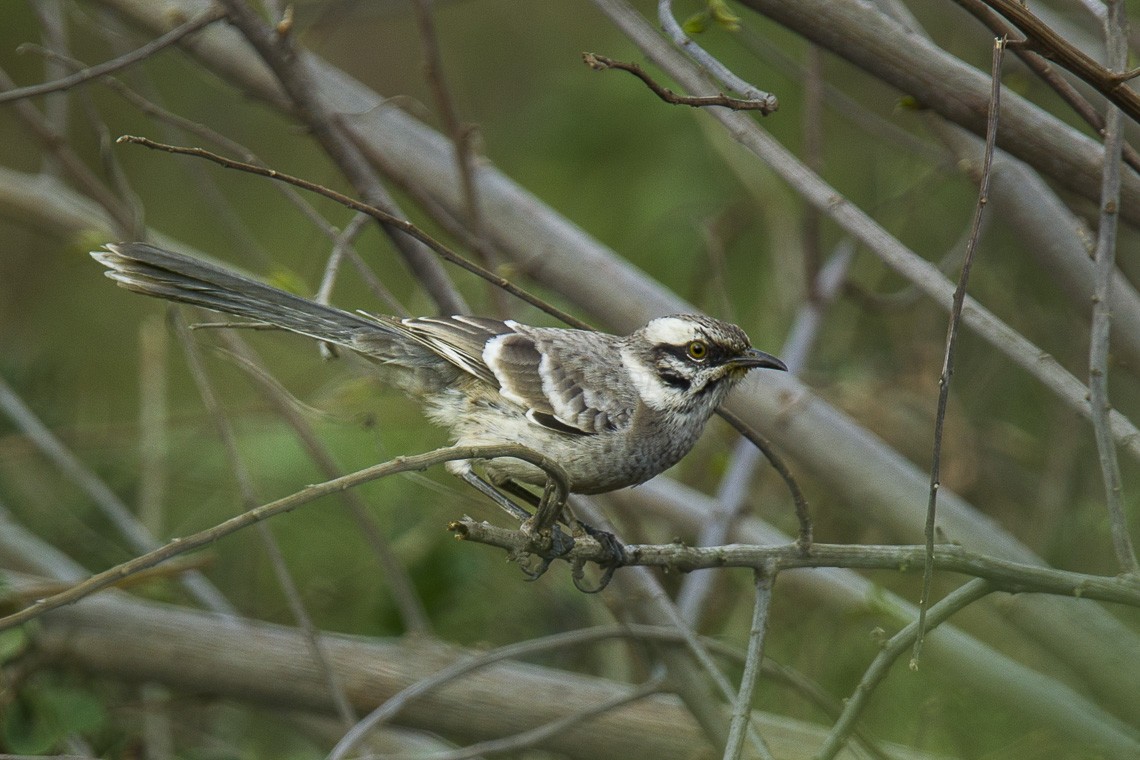Long-tailed Mockingbird
A species of Typical mockingbirds Scientific name : Mimus longicaudatus Genus : Typical mockingbirds
Long-tailed Mockingbird, A species of Typical mockingbirds
Botanical name: Mimus longicaudatus
Genus: Typical mockingbirds
Content
Description General Info
 Photo By Francesco Veronesi , used under CC-BY-SA-2.0 /Cropped and compressed from original
Photo By Francesco Veronesi , used under CC-BY-SA-2.0 /Cropped and compressed from original Description
An attractive, thrush-like bird, the long-tailed mockingbird has a long, elegant tail which it carries at a pert angle whilst on the ground. Its plumage is made up of grey, cappuccino, and dun coloured feathers. The outer tail feathers are broadly tipped white. Its face has been described as harlequin patterned. The juvenile is duller, with a dark iris, and is spotted or streaked on underparts. 
Size
30 cm
Colors
Brown
Black
Gray
White
Life Expectancy
20 years
Nest Placement
Shrub
Feeding Habits
Long-tailed Mockingbird primarily consumes insects, fruit, and seeds, foraging on the ground or in foliage. It actively hunts insects by pouncing. Unique adaptation includes a varied diet based on habitat and season, preferring fresh fruit when accessible.
Habitat
Long-tailed Mockingbird typically inhabits open and arid environments, such as desert scrub and dry woodland areas within coastal regions. Preferring landscapes dotted with low vegetation, long-tailed Mockingbird can be found in forest edges, montane scrubs, and young second growths. They are also adaptable to human-modified areas, including gardens, parks, agricultural lands, and areas with hedgerows and tree groves. The species thrives from sea level to highland regions, with altitude records up to 2950 meters.
Dite type
Omnivorous
General Info
Feeding Habits
Bird food type
Species Status
Not globally threatened.
Scientific Classification
Phylum
Chordates Class
Birds Order
Perching birds Family
Mimids Genus
Typical mockingbirds Species
Long-tailed Mockingbird